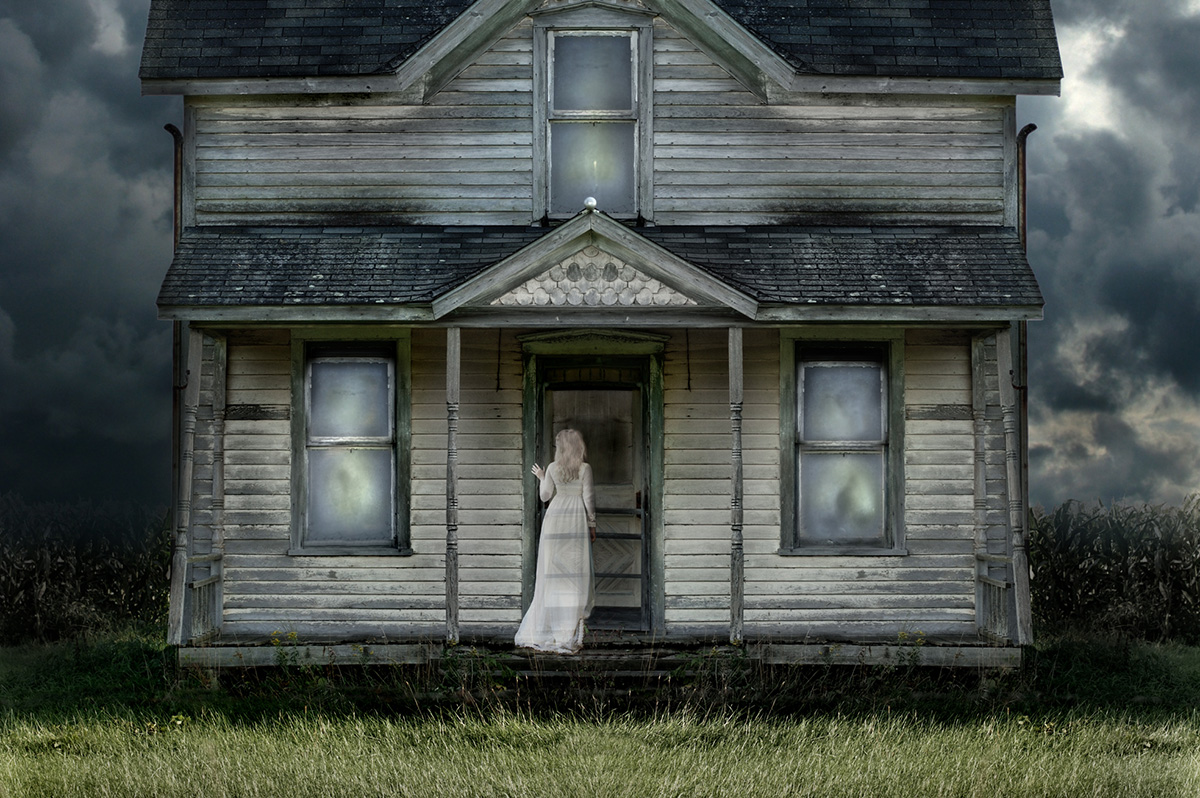Living
Glory days
Tracks — gay nightlife staple of ‘80s/’90s — remembered fondly


Tracks (Washington Blade file photo)
The planning and organizing has taken on all the earnestness and care of a high school or college reunion.
But in a series of events scheduled for this weekend at three D.C. clubs, patrons and employees of a gay nightclub called Tracks — which entertained and some say mesmerized thousands during its run from 1984 to 1999 — will come together for a reunion that may have a far greater meaning for them than a school reunion, according to organizers.
“Tracks nightclub is widely revered as the legendary nightclub of Washington, D.C.,” says a statement on the event’s website, TracksDC.com.
“And although there have been many other nightclubs, parties, events and gathering places that may hold fond memories for many from Washington, Maryland, Virginia and the surrounding region, there is no denying that Tracks meant considerably more to considerably more people for considerably more years than any other nightclub in D.C. history,” the statement says.
Patrick Little, a Tracks bartender and manager and one of the lead organizers of the reunion, said 100 percent of the proceeds for the reunion will go to seven non-profit charitable groups, including Whitman-Walker Health, the House of Ruth shelter for homeless women, the Sexual Minority Youth Assistance League (SMYAL) and the Mautner Project for lesbians with cancer and other serious illnesses.
Other recipients of the proceeds include the AIDS service group Us Helping Us, the D.C. Center and the Metropolis Fund, which raises money to support local and national AIDS causes.
Denver-based businessman Marty Chernoff, founder and owner of Tracks, has been credited with bringing to D.C. a gay nightclub that offered features that no other nightclub offered in the area, gay or straight, from the time it opened in 1984 through at least a decade or longer, Little and others working on the reunion say.

(Washington Blade file photo)
Little and Ed Bailey, who worked as a Tracks DJ and later as its director of promotions, pointed to some of the features of Tracks that set it apart from other clubs. Located in a sprawling warehouse building at 1111 First St., S.E., the club’s main room or hall included the region’s largest dance floor at the time.
Chernoff, who had been operating a Tracks nightclub in Denver, installed in the D.C. club the same state-of-the-art theatrical lighting and sound system he had been using in the Denver club. Chernoff also built in the D.C. club a separate video room with its own dance floor and sound system.
According to Bailey, the video screens were among the largest of any of the existing clubs in the area at a time when video screens were just starting to be installed in clubs in big cities like New York and Los Angeles.
And unlike most other clubs at the time, Chernoff had a large outdoor space as part of the Tracks property in which he installed a volleyball court with beach sand. He also built an 18-inch-deep pool surrounded by a large deck with chairs and an outdoor bar and grill, where hot dogs and hamburgers, among other food items, were served.
The outdoor space also featured yet another dance floor and sound system that became popular in the warm months.
“I built what I thought would work well, including some things where people said, ‘Are you crazy? Who ever heard of a volleyball court in a nightclub?’” Chernoff says. “And I said, ‘Well I tried it in Denver and it worked pretty well. Let’s give it a try here.’”
Bailey and others familiar with Tracks say the volleyball court along with the numerous other amenities at the club worked well, as capacity crowds came to the club on most weekends.
“The video, sound system and lighting were way ahead of their time,” Bailey says. “The music was always cutting edge. And it was far more laid back than other nightclubs.”
Tracks featured nationally known live performers almost once a month for several years. Among them were Gloria Gaynor, Thelma Houston, Crystal Waters, The Village People, Robin Ess, Martha Washington and CeCe Peniston.
Unlike many other gay clubs at the time, Tracks attracted a diverse cross section of the LGBT community, including whites, blacks, men and women, Latinos and Asians, Bailey and Little say. As word got out about Tracks’ grand scale, straights began to come to the club at various times.
Before long, Little says, Friday nights became known as “straight night,” even though gays continued to come to the club on that night.
“It was the biggest, coolest club in the city so other people started going,” Bailey says. “The straight crowd knew it was a gay club but they couldn’t find anything like it anywhere else.”
Chernoff says he and his staff welcomed the diversity of the crowds that packed the club, which sometimes exceeded its occupancy limit of 1,300 people.
He made it clear in no uncertain terms on a sign posted at the entrance that while everyone was welcome, Tracks was a gay club “and if that is a problem for you then you shouldn’t come in.”
“The one absolute we had is we were not going to discriminate,” Chernoff says.

(Washington Blade file photo)
Little says the three nights of the reunion set for this weekend — Friday through Sunday — were put together to reflect the different types of music and crowds that came to Tracks on different nights.
Chernoff says he was especially proud of the lighting system and other features in the Tracks main hall. The enormous dance floor was surrounded by an elevated standing area where people could watch the action on the floor. He arranged for a small platform to be placed high above the main hall dance floor from which a giant mosaic mirrored disco ball was suspended that could be lowered and raised.
A heavy-duty cable was sometimes used to lower performers from the platform above the dance floor. During one of the club’s New Year’s Eve parties, a “heavy-set drag queen dressed only in a diaper” was lowered from the perch above the dance floor “to the hoots and hollers of the crowd below, which was taken by complete surprise.”
Celebrity encounters
Chernoff says one of the “horror stories” he recalls during the years he operated Tracks was when singer Grace Jones, who was booked for a live performance, refused to go on stage when the time for her act was scheduled to begin.
“She was just impossible to work with,” Chernoff says. “She said, ‘I’ll decide if I go on or not go on. I’ll see how I feel about it.’ I said, ‘You owe it your fans out there. Please go on stage.’ She said, ‘I’ll decide if I want to go on or not. Maybe I don’t feel like going on.’ So finally I said, ‘Enough is enough. Just get the hell out of my building. I don’t need to put up with this crap.’”
He says Tracks refunded the money for everyone who paid for admission to see Jones perform, writing off the episode as “one of our biggest disasters.”
Among the most pleasant encounters with a performer or group booked at Tracks was the appearance of the Village People, one of the most popular disco-era acts, especially for gay audiences, Chernoff says.
“It was such a great experience and such a great vibe,” he says. “So after they put the show on they didn’t leave. They stayed and partied with everybody until 5 or 6 in the morning. They said, ‘We don’t want to go home. We’re party people and this is the best party in town.’”
Changing times

(Washington Blade file photo)
“It became a home for a lot of people,” says Reg Tyson, who was part of a group that partnered with D.C. businessman Paul Yates, who bought Tracks from Chernoff around 1990.
“I think it was the right place at the right time,” Tyson says. “It was a new place that allowed people to be free to be themselves, to express themselves.”
The club flourished under Yates’ ownership as Bailey, who had been working as a DJ, was moved by Yates to the post of director of promotions.
Chernoff says around 1996 Yates decided to withdraw from the business, and Chernoff resumed his position as Tracks owner until the time the club closed its doors in 1999. By that time Bailey had left Tracks to become involved with a new and even bigger nightclub located one block away called Nation, which started a Saturday night gay dance party called Velvet Nation.
“Like everything else, Tracks’ time had come,” Chernoff says. “You can’t hang on to the previous concept and expect it to move into the next decades and next generations. What made Tracks unique and phenomenal — it had run its course.”
Ongoing negotiations with a developer that had expressed interest in buying the Tracks property to build a new office building reached the stage where a deal was finalized, Chernoff says.
Bailey says he was honored to have worked for Chernoff and credits him with teaching him the ins and outs of operating a nightclub, skills that Bailey says helped him in his work at Nation.
“Tracks innovated the nightclub scene in a way that Nation benefited,” Bailey says.
Bailey says he was also honored that Chernoff and the Tracks staff invited him to work as DJ at Tracks during its closing night party in November 1999.
Kevin Brennan, a Tracks customer who was later hired as a lighting technician at the club, says he and his partner of 18 years, Don Oberholzer, have especially fond memories of Tracks.
“That’s where we met,” Brennan says. “I think he was dancing on one of the dance boxes in the big room and we just started talking.” They had their first date about a week later and have been a couple ever since. The two were married in D.C. last year.
“It made an impression on me in the sense that nothing else has ever compared,” Brennan says of the club. “I never felt like there was another club that had everything that Tracks had.”
Real Estate
How federal layoffs, shutdown threaten D.C.-area landlords
When paychecks disappear, the shock doesn’t stop at the Beltway

When federal paychecks disappear, the shock doesn’t stop at the Beltway. It lands on the doorsteps of the region’s property owners, those who rent out their rowhouses in Petworth, condos in Crystal City, and homes stretching into Montgomery and Prince George’s counties. Landlords depend on steady rent from tenants employed by the very institutions that are now downsized or worse, shuttered.
This fall, Washington’s economic identity is being tested once again. Thousands of federal workers who accepted “deferred resignation” packages will soon lose their income altogether. And with a long government shutdown looming, even those still on the payroll face delayed paychecks. For landlords, that combination of uncertainty and sudden income loss threatens to unsettle a rental market already balancing on the edge.
A Test of Resilience
Rosie Allen-Herring, president of United Way of the National Capital Area, recently told The Washington Post, “This region stands to take a hard hit from those who are no longer employed but can’t find new employment and now find themselves in need. It’s a full-circle moment to be a donor and now find yourself in need, but it is very real for this area.” 1 That reversal captures the broader moment: The D.C. economy built on federal paychecks and charitable giving now faces a stress test of compassion and cash flow alike.
For landlords, adaptability will determine who weathers the storm. Those who are able to keep the rent coming in, retain their tenants or find replacement tenants without the same economic hardships are going to be able to get to the other side with manageable financial disruptions. Those who plan, communicate, and stay financially flexible will keep their properties occupied and their reputations intact.
A Region Built on Federal Pay
Roughly one in ten jobs in the Washington metropolitan area is tied directly to the federal government, according to the Bureau of Labor Statistics. That number climbs sharply when you include contractors, nonprofits, and think tanks dependent on federal funding.
This concentration means that when the federal government sneezes, D.C.’s housing market catches a cold. The Brookings Institution recently reported that since January, the region’s unemployment rate has climbed eight times faster than the national average, and local job growth has flattened. 1 More anecdotal, I’ve spoken with property owners this year who are looking to rent out the property they own in DC because they have to move to another region for work.
As The Post observed, “The region has shed federal jobs at a higher rate, and both the number of homes for sale and the share of residents with low credit scores have grown more quickly here than the rest of the country.” 1
For landlords, that’s a flashing warning light. When a certain category of tenants with solid compensation lose reliable government salaries and face dim re-employment prospects, rent becomes harder to collect and rent levels can decline year on year.
The Human Side of a Policy Shock
The people behind these statistics are often long-tenured civil servants. The Post profiled former State Department employee Brian Naranjo, who said he had “unsuccessfully thrown his résumé at more than 50 positions since resigning in May.” “It’s terrible,” Naranjo told the paper. “You have far more people going for those very specialized jobs than would normally be out there.” 1
Another displaced worker, Jennifer Malenab, a 42-year-old former Department of Homeland Security employee, described canceling daycare and family vacations while she scours job boards. “This is not where you want to be at 42, with a family,” she said. 1
When households like these lose steady pay, not only do they pull back on spending, but if they are renters landlords may see a lag in rent receipts, requests for partial payments, or in some cases, a premature notice to vacate. Some tenants will relocate out of the region altogether — a prospect already visible in rising “for sale” listings and increased moving-truck activity in Northern Virginia and suburban Maryland.
What Happens When the Rent Doesn’t Arrive
When rent payments are disrupted, even temporarily, the financial effects can be immediate. Many small landlords depend on rent to cover their mortgages, property taxes, insurance premiums, and routine maintenance. Even a temporary interruption in income can deplete reserves, delay repairs, and strain their ability to meet loan obligations.
Larger multifamily owners are not immune. If multiple tenants in a building lose income at once, cash flow can fall sharply. During the brief 2019 government shutdown, some D.C. landlords offered short-term payment plans to furloughed workers with the expectation of eventual back pay. However, under current conditions, where many positions are being permanently eliminated and paychecks may not be restored, landlords face much greater uncertainty and cannot assume repayment will be guaranteed.
In the District of Columbia, the Rental Housing Commission has advised landlords to continue operating strictly within established legal procedures and to avoid informal or selective payment arrangements that could be interpreted as discriminatory under the D.C. Human Rights Act. Courts in Virginia and Maryland allow temporary continuances when tenants provide documentation of a federal furlough or income disruption, but it is the court, not the landlord, that determines eligibility for relief.
How Landlords Should Proceed
- Continue filing nonpayment cases through normal legal channels rather than delaying action.
- Allow the courts to apply any continuance or relief provisions if a tenant qualifies due to federal employment status or income interruption.
- Avoid making selective accommodations based on a tenant’s job type or federal employment status, as this may violate equal-treatment and source-of-income protections.
Landlords with a single tenant or a consistent written policy of offering payment plans to all tenants experiencing verified income disruption should not be at risk of discriminatory treatment.
Vacancy, Concessions, and Shifting Demand
Beyond nonpayment of rent, landlords face a challenge from a different direction: weak demand. As fewer jobs are being created and unemployed or under-employed tenants move out of DC, the supply of available rental units will rise, forcing landlords to compete more aggressively on price and amenities.
Market data already point that direction. The volume of rental listings across the District of Columbia jumped roughly 14 percent year-over-year in September, according to the realtor Multiple Listing Service (MLS) trends, as reported by the Washington Business Journal. Landlords are offering free parking, one-month concessions, or flexible leases to retain quality tenants.
Neighborhoods once buffered by federal stability like Silver Spring, Falls Church, and Alexandria may now see higher tenant turnover. As one Arlington property manager put it, “We used to say federal employees were the safest tenants in America. Now we’re rewriting that rule.”
A Shrinking Workforce, a Softer Market
In addition to the layoffs, the region is contending with a broader identity crisis. “Yesim Sayin, executive director of the D.C. Policy Center, put it bluntly: ‘Beyond federal employment, we relied on tourism. But foreign tourists aren’t coming. And we relied a whole lot on universities bringing talent who would then stay here and be part of our talent pool. And that is kind of gone, too. So what are we now? We just don’t know.’” 1
This uncertainty may impact property values and investor sentiment. When employers relocate, renters follow. If enough mid-career professionals leave, demand for rentals will first soften and then we’ll begin to see a lowering of the average rents a landlord can command for their rental. We have already seen this in the current rental market. Rents that seems reasonable a few years ago, are now being discounted by hundreds of dollars. Landlords who are searching for new renters after several years of having tenants are finding that they need to bring rent levels below where they used to be to secure tenants commitments.
Strategies for Landlords: Staying Solvent and Supportive
In times like these, survival depends on both prudence and empathy.
1. Communicate early. Encourage tenants to disclose financial hardship before missing payments. Written payment plans, properly documented, can forestall eviction while preserving goodwill.
2. Review legal protections. Understand D.C., Maryland, and Virginia rules regarding furlough continuances or income-source discrimination. Seek legal counsel before altering lease terms mid-cycle.
3. Build reserves and credit access. Line up a home-equity or business line of credit to bridge shortfalls. Cash on hand always is helpful to have as a buffer for the impact of income disruption.
4. Monitor policy developments. State and local governments are supporting people who are affected by the lay-offs. Landlords can benefit indirectly through their renters who are utilizing these programs to assist them in paying their monthly expenses.
5. Contact your Congressional representatives to demand the reopening of the federal government. And in D.C., you do benefit from representation, even though they cannot vote. They can influence decisions that matter.
Scott Bloom is owner and senior property manager of Columbia Property Management.
Real Estate
Real terrors of homeownership come from neglect, not ghosts
Mold, termites, frayed wires scarier than any poltergeist

Each October, we decorate our homes with cobwebs, skeletons, and flickering jack-o’-lanterns to create that spooky Halloween atmosphere. But for anyone who’s ever been through a home inspection there’s no need for fake scares. Homes can hide terrors that send chills down your spine any time of year. From ghostly noises in the attic to toxic monsters in the basement, here are some of the eeriest (but real) things inspectors and homeowners discover.
Every haunted house movie starts with a creepy basement, and in real life, it’s often just as menacing. Mold, mildew, and hidden water leaks lurk down there like invisible phantoms. At first, it’s just a musty smell — something you might brush off as “old house syndrome,” but soon enough, you realize those black or green patches creeping along the walls can be more sinister than any poltergeist.
Black mold (Stachybotrys chartarum) is particularly fearsome – it thrives in damp, dark places and can cause serious respiratory problems. It’s not just gross – it’s toxic and, while some types of mold can be easily cleaned up, removing black mold can cost more than an exorcism.
Have you ever heard strange buzzing or seen flickering lights that seem to move on their own? Before you call the Ghostbusters, call an electrician. Faulty wiring, outdated panels, and aluminum circuits from the mid-20th century are the true villains behind many mysterious house fires. Home inspectors can also find open junction boxes, frayed wires stuffed behind walls, or overloaded breaker panels that hum like a restless spirit.
Imagine an invisible specter floating through your home – something that’s been there since the 1950s, waiting for you to disturb it. That’s asbestos. Home inspectors dread discovering asbestos insulation around old boilers or wrapped around ductwork. It’s often lurking in popcorn ceilings, floor tiles, and even wall plaster. You can’t see it, smell it, or feel it—but inhaling those microscopic fibers can lead to serious illness decades later.
Lead pipes, once thought to be durable and reliable, are like the vampires of your water system – quietly poisoning what sustains you. The results of a lead test can be chilling: even a small amount of lead exposure is dangerous, particularly for children.
And it’s not just pipes – lead paint is another problem that refuses to die. You might find it sealed beneath layers of newer paint, biding its time until it chips or flakes away. This is why, when selling a property built prior to 1978, homeowners must disclose any knowledge of lead paint in the home and provide any records they may have of its presence or abatement.
Scratching in the walls. Tiny footsteps overhead. Droppings in the attic. It’s not a poltergeist – it’s pests. Termites, rats, bats, carpenter ants, and even raccoons can do more damage than any ghost ever could.
Termites are the silent assassins of the home world, chewing through beams and joists until the structure itself starts to sag. Rats and mice leave behind droppings that can spread disease and contaminate food. Bats are federally protected, meaning your haunted attic guests can’t just be evicted without proper precautions. And I once had a raccoon give birth in my chimney flue; my dogs went crazy.
Ever step into a home and feel the floors tilt under your feet? That’s no ghostly illusion – it’s the foundation shifting beneath you. Cracked walls, doors that won’t close, and windows that rattle in their frames are the architectural equivalent of a horror movie scream.
Foundation damage can come from settling soil, poor drainage, or tree roots rising from under the structure. In extreme cases, inspectors find entire crawl spaces flooded, joists eaten by rot, or support beams cracked like brittle bones. Repair costs can be monstrous – and if left unchecked, the whole house could become a haunted ruin.
Some homes hold more than just physical scares. Behind the drywall or under the floorboards, inspectors may uncover personal relics – old letters, photographs, even hidden safes or forgotten rooms. Occasionally, however, there are stranger finds: jars of preserved “specimens,” taxidermy gone wrong, or mysterious symbols scrawled in attic spaces.
These discoveries tell stories of the people who lived there before, sometimes fascinating, sometimes chilling, but they all add to the eerie charm of an old home, reminding us that every house has a history — and some histories don’t like to stay buried.
So, while haunted houses may be a Halloween fantasy, the real terrors in homeownership come from neglect, not ghosts. Regular inspections, good maintenance, and modern updates are the garlic and holy water that turn a trick of a home into a treat.
Valerie M. Blake is a licensed associate broker in D.C., Maryland, and Virginia with RLAH @properties. Call or text her at 202-246-8602, email her via DCHomeQuest.com, or follow her on Facebook at TheRealst8ofAffairs.
Advice
Sexual desire is waning, should we open our relationship?
Couple faces difficult choices after seven years

Dear Michael,
When I met my husband seven years ago, I was super attracted to him and we had a really hot sex life.
That feeling has been waning for a while and now I am just not feeling it.
I know that people get older, gain weight, get less attractive over time but that’s not the case here. Ben is as good looking as ever. But I have little desire to have sex with him.
It bothers me that I don’t really want to have sex with the guy I love and want to spend the rest of my life with.
Is this why everyone else I know has an open relationship? Is there something I can do to want to have sex with my husband again?
This is causing major problems in my marriage. I don’t initiate anymore and half the time I find an excuse to not have sex when Ben initiates. He knows something is up but I usually blame it on work stress or not feeling well. I don’t want to hurt his feelings.
Aside from this, I love Ben and we have a lot of fun together. We’re very close, talk about all sorts of stuff, but not this.
Michael replies:
Pretty much everyone in a long-term relationship has to deal with decreased desire at some point.
Sex changes after you’ve been with your partner for a while. Sex is not going to be as easy, hot, and irresistible as it was at the beginning of the relationship. Newness generates a lot of the sexual heat at the outset of a relationship, and when the newness is gone, you don’t easily feel the same sizzling excitement that you felt when you first met.
Unfortunately, the kind of sex that people have at the beginning of a relationship is totally glorified in our culture as the gold standard of sex.
I say “unfortunately” because it’s not possible to consistently have the hot sex of a new relationship, ongoing, with a long-term partner. So if you think that is the best or only kind of sex to have, you will be contemptuous of anything else, and you will be disappointed in your sex life with your partner as time marches on.
But the sizzling sex people have at the start of a relationship is just one way to have sex. If you are willing to be imaginative, and are open to change, there are many other kinds of sex that can be wonderful.
How about sex for emotional connection? Sex for physical closeness? Sex for romance? Sex to celebrate just being together?
So, consider changing (not lowering!) your expectations. Rather than sulking or moping that you don’t want to spontaneously jump Ben’s bones, be open to having sex with your husband that is based more on your relationship and on your love for each other.
Now, here’s a whole other angle to consider: While the excitement of a new partner often fades, there are still ways to generate excitement and passion in a long-term relationship by taking risks and revealing yourself more deeply. Stick with me and I’ll explain.
- You haven’t said anything to Ben about your waning interest. I encourage you to re-think this. You would be much better positioned to tackle this issue collaboratively. Not talking about how stuck you feel is likely to deepen your feeling of shame and fear that something is wrong. Speaking with Ben about what is actually a fairly common couples’ issue could be a relief.
- Ironic as this may seem, the closer two people are, the less comfortable they may be being frankly sexual with each other. Clients often tell me that they are more comfortable expressing their real desires to someone they hardly know (or don’t know at all) than to their significant other. For one thing, the more your partner means to you, the more you may fear rejection if you reveal sexual feelings and desires that might upset or even shock your partner. For another, as couples get closer, sex may start to feel like too much closeness, and avoiding sex may be a way to create some space.
Not speaking up about what is important keeps you distant from your partner and drains your relationship of vitality. A powerful antidote to this: work toward becoming a person who can take risks, tolerate discomfort and uncertainty, and be able stand on your own when you don’t get your partner’s validation.
Talking with Ben, whether it’s about your lack of spontaneous desire for sex, or about sexual interests you may be keeping from him for fear of judgment, would involve your making uncomfortable moves that might lead to Ben’s judgment or even rejection. But doing so would also, of course, allow the possibility of more happening between you sexually. It would also let Ben know you better, thereby deepening the level of intimacy in your relationship. Making these moves could also be inherently exciting, which —guess what—could help to shake you out of your sexual doldrums and bring more passion and life into your relationship.
Similarly, you might start initiating. Even if you’re afraid it won’t go well and even if you’re not feeling it. That is the only way you are going to figure out how to have satisfying long-term sex. Take the need for an erection or orgasm off the table. Sex with your partner should not be a performance. Go for closeness, connection, and what feels good. And challenge yourself to go places that you are uncomfortable about going.
If any of this intrigues you, “Passionate Marriage” and “Intimacy and Desire,” both by David Schnarch, explore how your sexual connection can deepen over time in a long-term relationship.
Finally, with regard to your considering an open relationship as a remedy: Do you think that would enhance the sexual connection between you and Ben?
Michael Radkowsky, Psy.D. is a licensed psychologist who works with couples and individuals in D.C. He can be found online at michaelradkowsky.com. All identifying information has been changed for reasons of confidentiality. Have a question? Send it to [email protected].
-

 U.S. Supreme Court4 days ago
U.S. Supreme Court4 days agoSupreme Court rejects Kim Davis’s effort to overturn landmark marriage ruling
-

 District of Columbia4 days ago
District of Columbia4 days agoCapital Pride files anti-stalking complaint against local LGBTQ activist
-

 Politics1 day ago
Politics1 day agoPro-trans candidates triumph despite millions in transphobic ads
-

 Dining4 days ago
Dining4 days agoSpark Social House to start serving alcohol


















